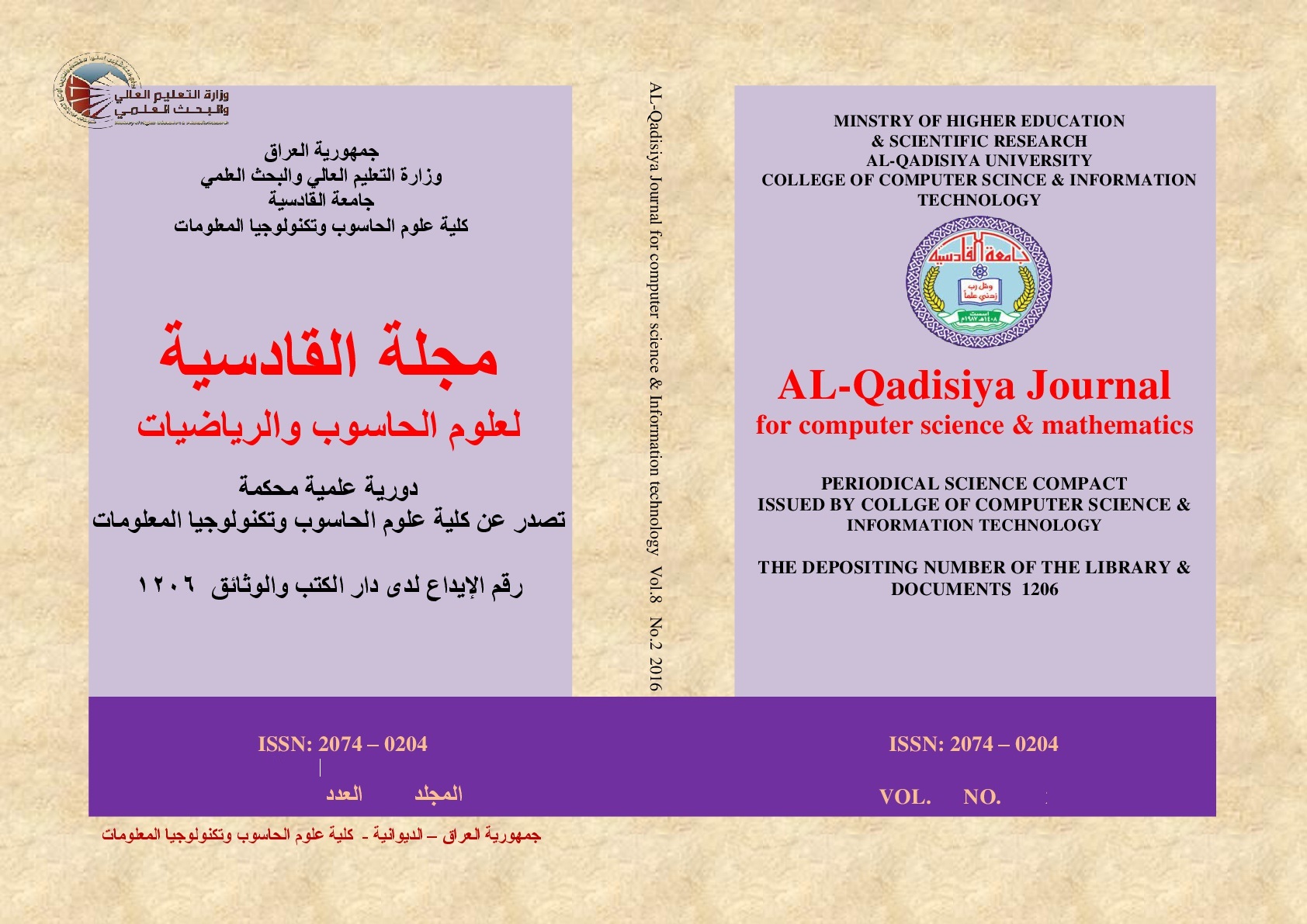Machine Learning-Based Heart Disease Detection with ANOVA Feature Selection
DOI:
https://doi.org/10.29304/jqcsm.2025.17.32427Keywords:
Machine Learning, Bag of FeaturesAbstract
Heart disease(HD) has emerged as one of the most critical health issues that significantly impact human existence. It has become one of the primary causes of mortality worldwide over the past decade. The World Health Organization announced in 2022 that heart disease was the cause of death for nearly one million people, equivalent to 33% of global mortality. In the current century, there is an increase in the use of non-surgical medical technologies, including artificial intelligence methods in the medical field. Machine learning employs many widely utilized algorithms and techniques that are essential in the rapid and efficient diagnosis of heart issues. However, diagnosing heart disease is a difficult task. The vast and expanding scale of medical datasets has hindered professionals' ability to comprehend the intricate correlations among variables and generate precise predictions. Accordingly, the proposed research aims to examine the role of feature selection techniques in supporting machine learning algorithms and improving model accuracy. A medical database of heart diseases with different features was relied upon. In the first stage, data analysis was conducted to understand the nature of the data and ensure its balance before the classification. This encompassed displaying statistical distributions of the data, identifying missing values, and analyzing the relationships between the variables that are independent and the target variable. This step was followed by implementing feature selection techniques, specifically using the ANOVA algorithm to identify the most pertinent features for heart disease detection. Finally, the machine learning algorithms were used on both the complete and reduced datasets to perform the classification. Accuracy, precision, recall, and F1-score were used to evaluate the trained classifiers. The results also show that when the number of features is reduced, the accuracy of classification models improves slightly compared to models trained on the entire set of features
Downloads
References
Qadri, A. M., Raza, A., Munir, K., & Almutairi, M. S. (2023). Effective feature engineering technique for heart disease prediction with machine learning. IEEE Access, 11, 56214-56224.
Sumon, M. S. I., Islam, M. S. B., Rahman, M. S., Hossain, M. S. A., Khandakar, A., Hasan, A., ... & Chowdhury, M. E. (2025). CardioTabNet: a novel hybrid transformer model for heart disease prediction using tabular medical data. Health Information Science and Systems, 13(1), 44.
Ogunpola, A., Saeed, F., Basurra, S., Albarrak, A. M., & Qasem, S. N. (2024). Machine learning-based predictive models for detection of cardiovascular diseases. Diagnostics, 14(2), 144.
Abu-Naser, S. S., Obaid, T., Abumandil, M. S., & Mahmoud, A. Y. (2022, November). Heart Disease Prediction Using a Group of Machine and Deep Learning Algorithms. In The International Conference of Advanced Computing and Informatics (pp. 181-196). Cham: Springer International Publishing.
Prasad, M. G., Kumar, D. S., Pratap, M. S., Kiran, J., Chandrappa, S., & Kotiyal, A. (2023, June). Enhanced Prediction of Heart Disease Using Machine Learning and Deep Learning. In International Conference on Advanced Communication and Intelligent Systems (pp. 1-12). Cham: Springer Nature Switzerland.
Kamireddy, R. R., & Darapureddy, N. (2023). A Machine Learning-Based Approach for the Prediction of Cardiovascular Diseases. Engineering Proceedings, 56(1), 140.
Wang, Z., Gu, Y., Huang, L., Liu, S., Chen, Q., Yang, Y., ... & Ning, W. (2024). Construction of machine learning diagnostic models for cardiovascular pan-disease based on blood routine and biochemical detection data. Cardiovascular Diabetology, 23(1), 351.
Ullah, T., Ullah, S. I., Ullah, K., Ishaq, M., Khan, A., Ghadi, Y. Y., & Algarni, A. (2024). Machine learning-based cardiovascular disease detection using optimal feature selection. IEEE Access, 12, 16431-16446.
https://www.kaggle.com/datasets/johnsmith88/heart-disease-dataset/data
Downloads
Published
How to Cite
Issue
Section
License
Copyright (c) 2025 Fatima Shaker, Rana Raad Shaker Alnaily, Saja Naeem Turky, Elham Kareem Wanas, Saja Sadiq Sadon

This work is licensed under a Creative Commons Attribution-NonCommercial-NoDerivatives 4.0 International License.













